- With standard equipment
- With safety pack
Find more information in the General Comments section of the assessment
Find more information in the Rating Validity tab of the assessment
- See More
- See More
- See More
- See More
- Good
- Adequate
- Marginal
- Weak
- Poor
 Rear Seat
Rear Seat
 Front Seat
Front Seat
- Good
- Adequate
- Marginal
- Weak
- Poor


Passenger
outboard
center
Fitted to the vehicle as standard
Not fitted to the test vehicle but available as option
Not Available
-
i-Size CRS
-
ISOFIX CRS
-
Universal Belted CRS
Easy
Difficult
Safety critical
Not allowed
| Seat Position | ||||
|---|---|---|---|---|
| Front | 2nd row | |||
| Passenger | Left | center | Right | |
| Maxi Cosi 2way Pearl & 2wayFix (i-Size) | ||||
| Maxi Cosi 2way Pearl & 2wayFix (i-Size) | ||||
| BeSafe iZi Kid X2 i-Size (i-Size) | ||||
| Britax Römer TriFix2 i-Size (i-Size) | ||||
| BeSafe iZi Flex FIX i-Size (i-Size) | ||||
| BeSafe iZi Combi X4 ISOfix (ISOFIX) | ||||
| Cybex Solution Z i-Fix (ISOFIX) | ||||
| Maxi Cosi Cabriofix (Belt) | ||||
| Maxi Cosi Cabriofix & EasyFix (Belt) | ||||
| Britax Römer King II LS (Belt) | ||||
| Cybex Solution Z i-Fix (Belt) | ||||
Easy
Difficult
Safety critical
Not allowed
In the frontal offset test, protection of both child dummies was good for all body regions except the neck of the 10 year dummy, protection of which was rated as weak, on the basis of measurements of tensile forces. In the side barrier impact, protection of the head of the 10 year dummy was adequate but that of the chest was rated as poor on the basis of accelerations measured during the test. The front passenger airbag can be disabled to allow a rearward-facing child restraint to be used in that seating position. Clear information is provided to the driver regarding the status of the airbag and the system was rewarded. All of the child restraint types for which the BAYON is designed could be properly installed and accommodated in the car.
- Good
- Adequate
- Marginal
- Weak
- Poor

Head Impact 14.9 Pts
Pelvis Impact 6.0 Pts
Leg Impact 6.0 Pts
| System Name | Forward Collision-Avoidance Assist | ||
| Type | Auto-Brake with Forward Collision Warning | ||
| Operational From | 5 km/h | ||
| PERFORMANCE | | |||
-
Cyclist from nearside, obstructed view
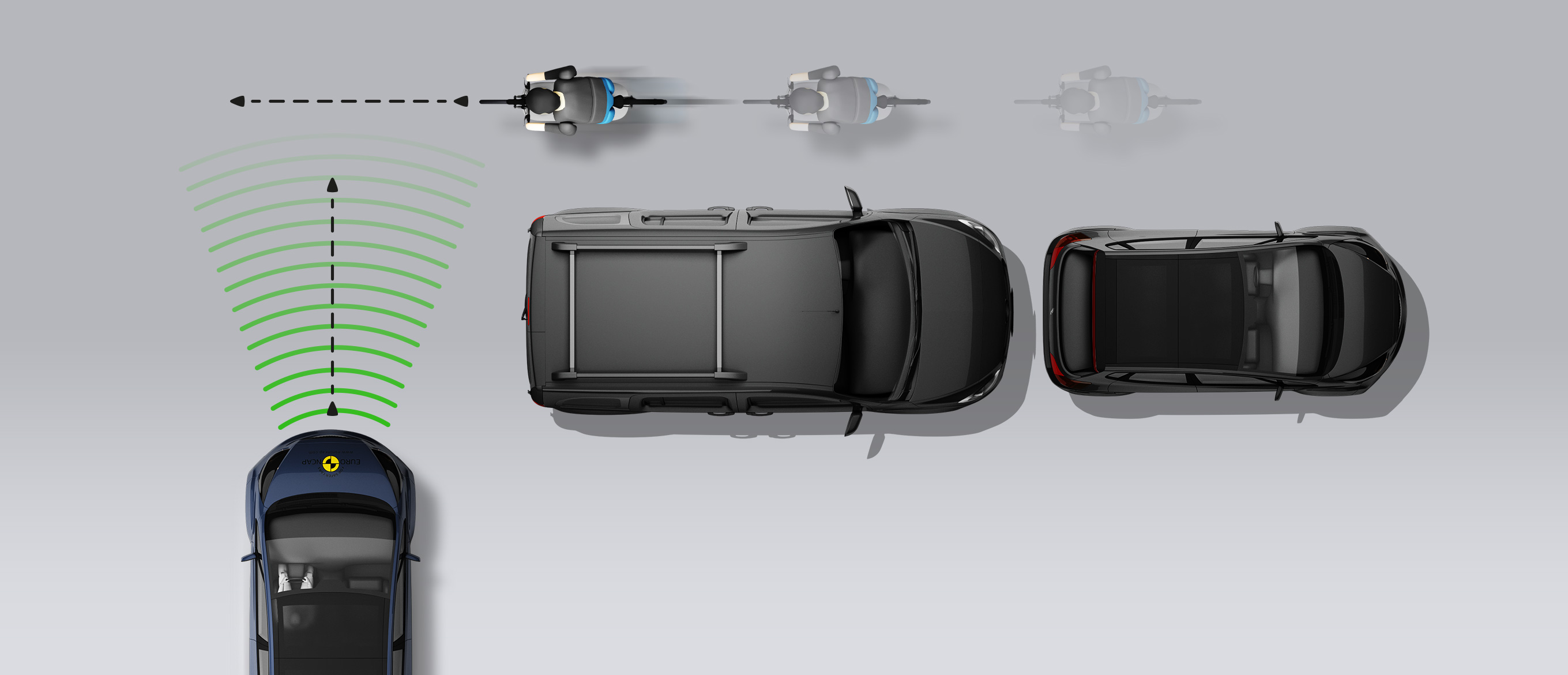
-
Approaching a crossing cyclist
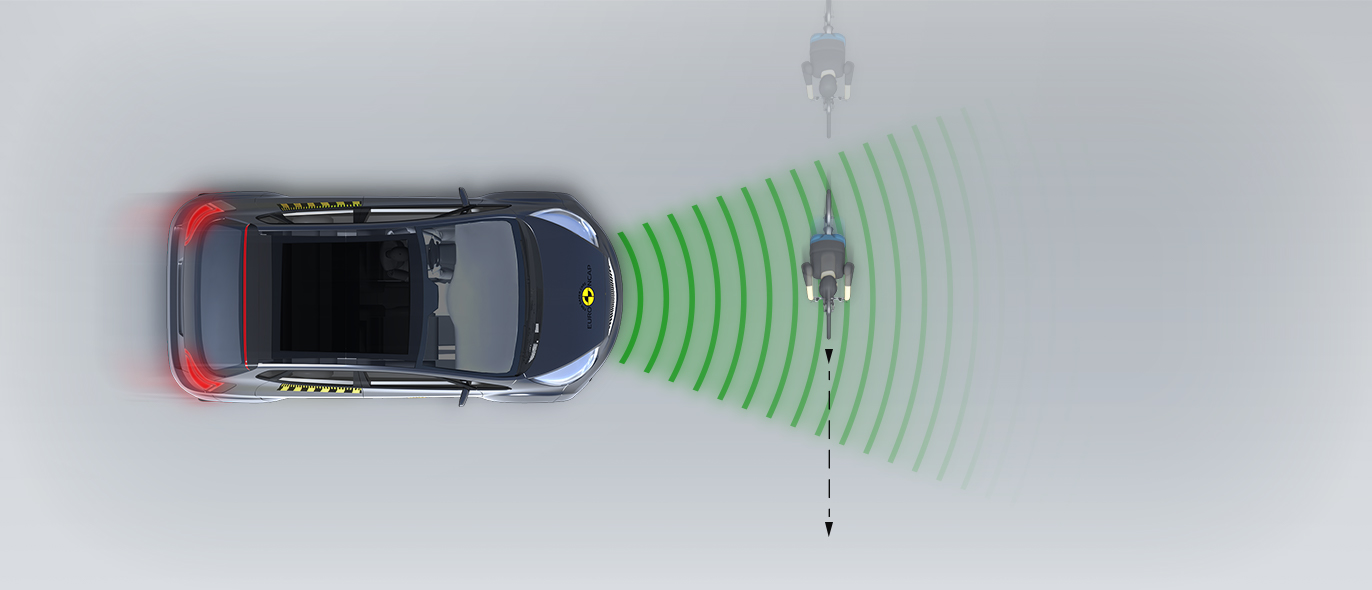
-
Cyclist along the roadside

The protection provided by the bonnet to the head of a struck pedestrian was mixed but was mostly rated as between marginal and good. Poor results were recorded at the base of the windscreen and on the stiff windscreen pillars. The bumper provided good protection to pedestrians’ legs at all test locations and protection of the pelvis was also good, the BAYON scoring maximum points in these areas of assessment. The autonomous emergency braking system of the BAYON detects vulnerable road users, as well as other vehicles. The system’s response to pedestrians was adequate and its response to cyclists was good, with collisions avoided or mitigated in most test scenarios.
- Good
- Adequate
- Marginal
- Weak
- Poor
| System Name | Manual Speed Limit Assist (MSLA) / Intelligent Speed Limit Assist (ISLA) |
| Speed Limit Information Function | Camera based, subsigns supported |
| Speed Control Function | Manually set (accurate to 5km/h) |
| Applies To | Front and rear seats | ||
| Warning | Driver Seat | Front Passenger(s) | Rear Passenger(s) |
| Visual | |||
| Audible | |||
| Occupant Detection | |||
|
|||
| System Name | Driver Attention Warning (DAW) |
| Type | Steering input |
| Operational From | 10 km/h |
| System Name | LKA |
| Type | LKA and ELK |
| Operational From | 60 km/h |
| Performance | |
| Emergency Lane Keeping | |
| Lane Keep Assist | |
| Human Machine Interface | |
| System Name | Forward Collision-Avoidance Assist | |||
| Type | Autonomous emergency braking and forward collision warning | |||
| Operational From | 5 km/h | |||
| Sensor Used | camera | |||
A seatbelt reminder is standard for the front and rear seats and a driver monitoring system monitors steering inputs for signs of fatigued driving. The autonomous emergency braking system showed only marginal performance in tests of its reaction to other vehicles. Speed assistance is provided by a system which informs the driver of the local limit, allowing the limiter to be set appropriately. A lane support system gently corrects the course of a car which is drifting out of lane and also intervenes in more critical situations.
- Specifications
- Safety Equipment
- Videos
- Rating Validity
Specifications
Tested Model Hyundai BAYON 1.0 T-GDI GL, LHD
Body Type - 5 door SUV
Year Of Publication 2021
Kerb Weight 1230kg
VIN From Which Rating Applies - all BAYONs
Class Small SUV
Safety Equipment
Note: Other equipment may be available on the vehicle but was not considered in the test year.
Fitted to the vehicle as standard
Fitted to the vehicle as part of the safety pack
Not fitted to the test vehicle but available as option or as part of the safety pack
Not available
Not applicable
Videos
Rating Validity
Variants of Model Range
| Body Type | Engine | Drivetrain | Rating Applies | |
|---|---|---|---|---|
| LHD | RHD | |||
| 5 door SUV | 1.2 MPI | 4 x 2 |  |
 |
| 5 door SUV | 1.0 T-GDI* | 4 x 2 |  |
 |
| 5 door SUV | 1.0 T-GDI 48V MHEV | 4 x 2 |  |
 |
* Tested variant




Find more information in the General Comments section of the assessment
 Share
Share
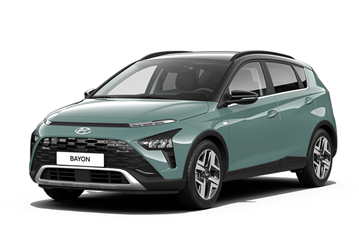
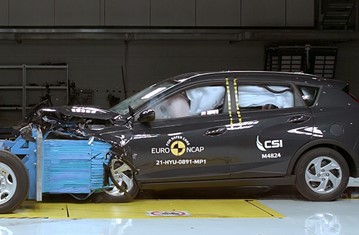




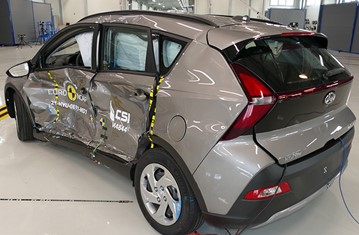











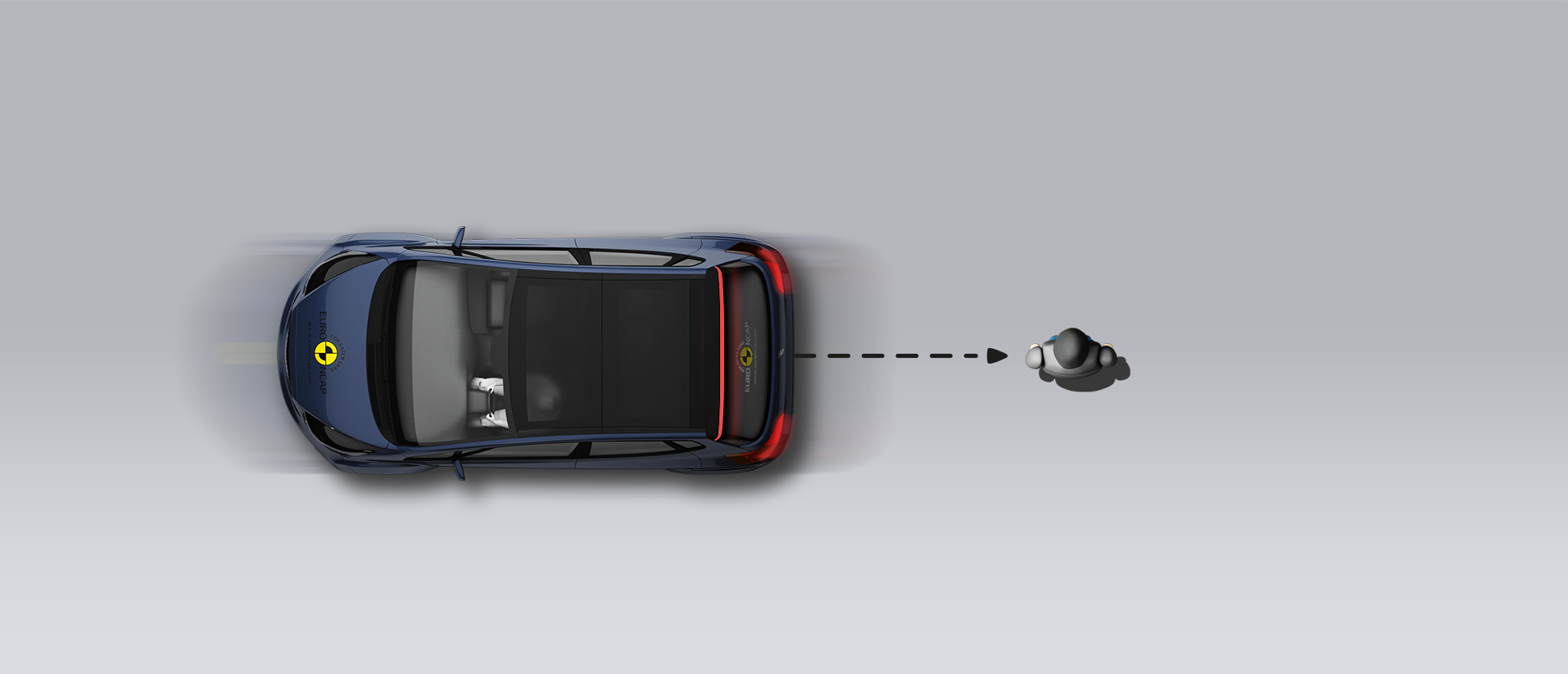
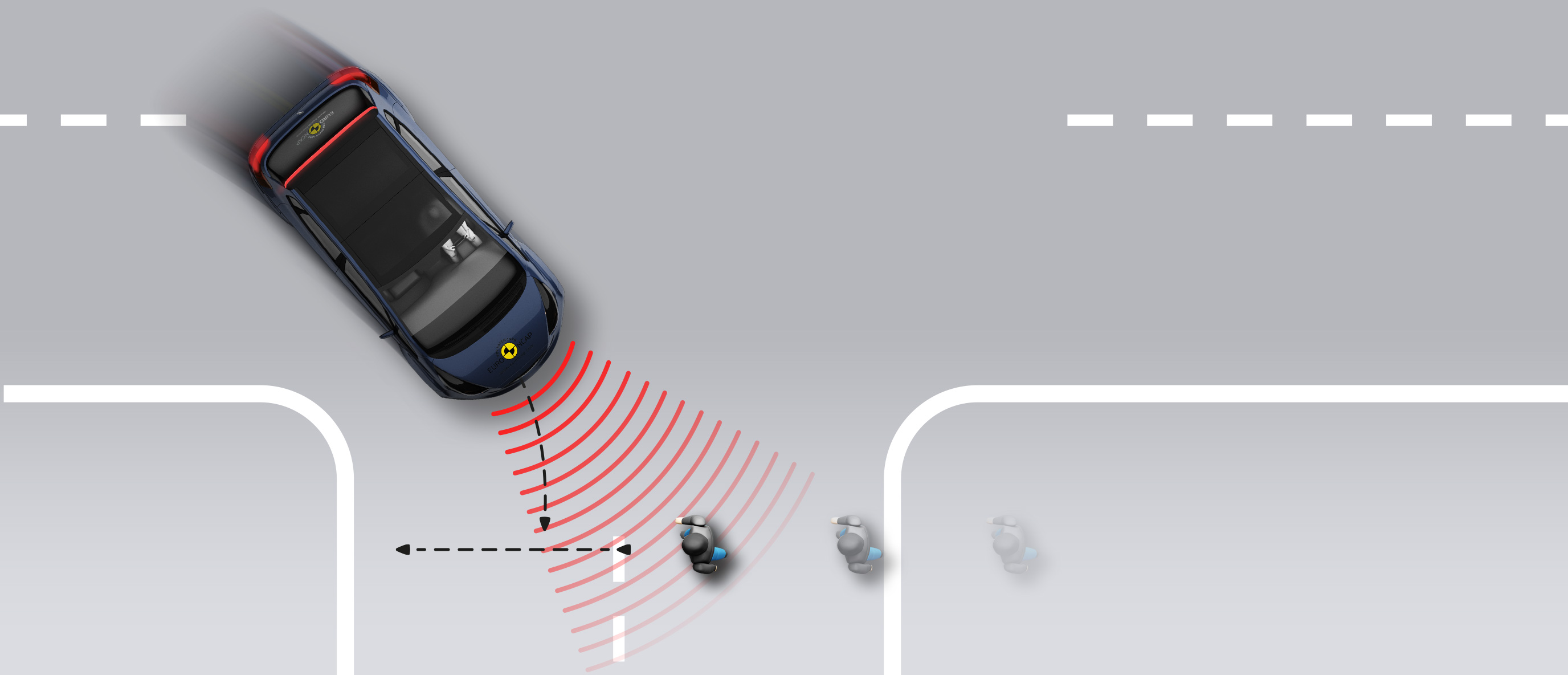

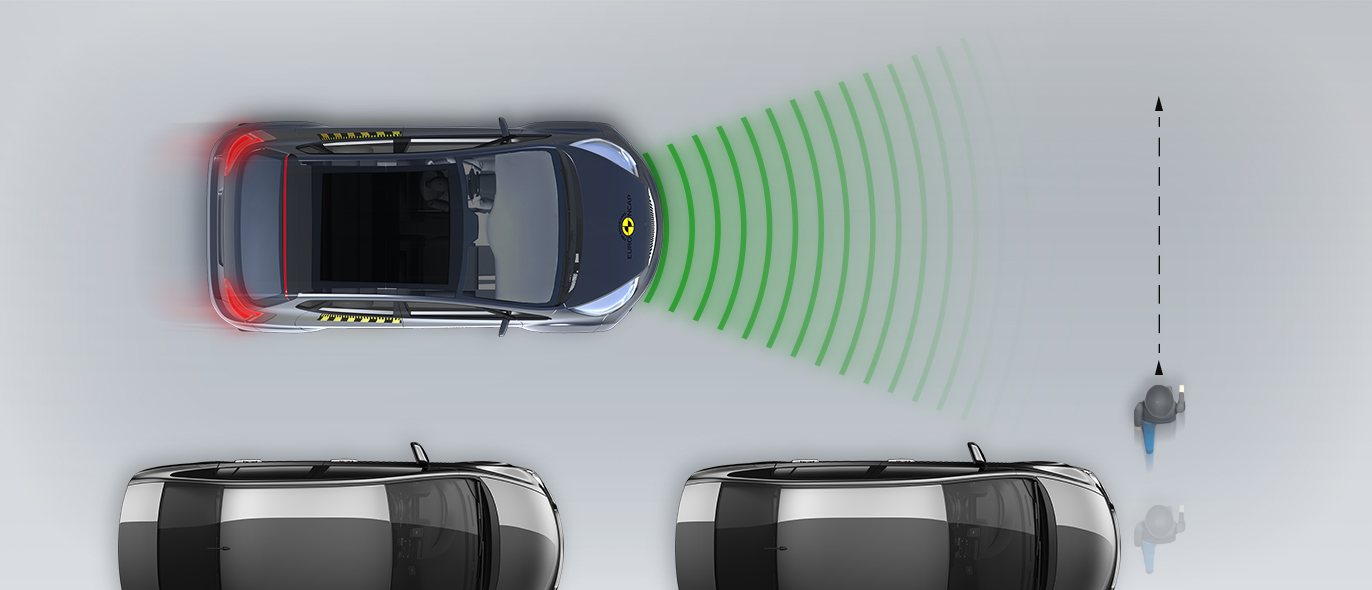



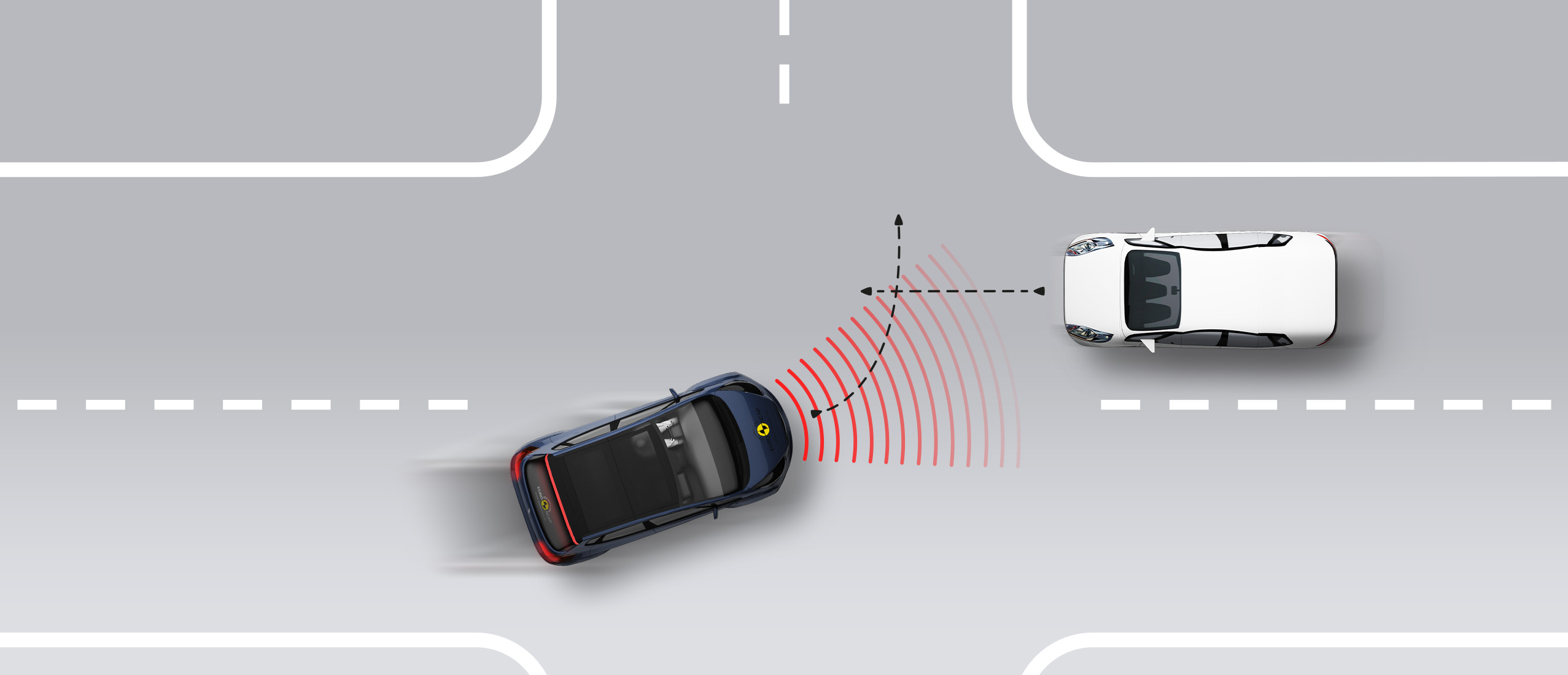



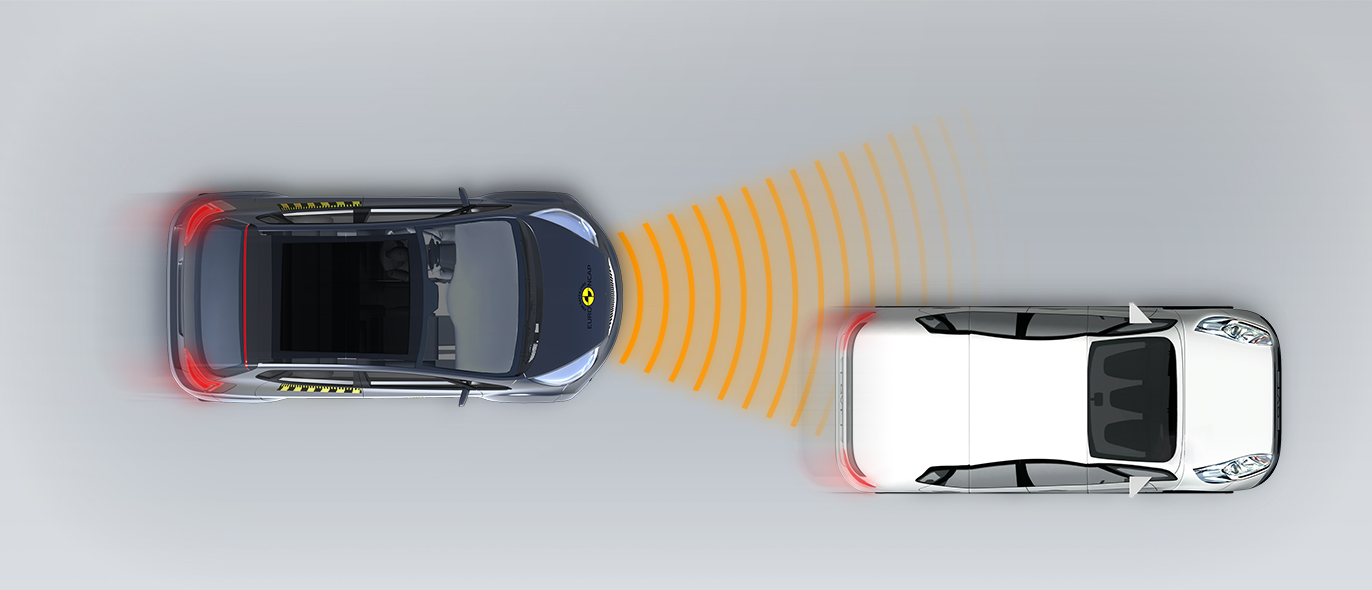
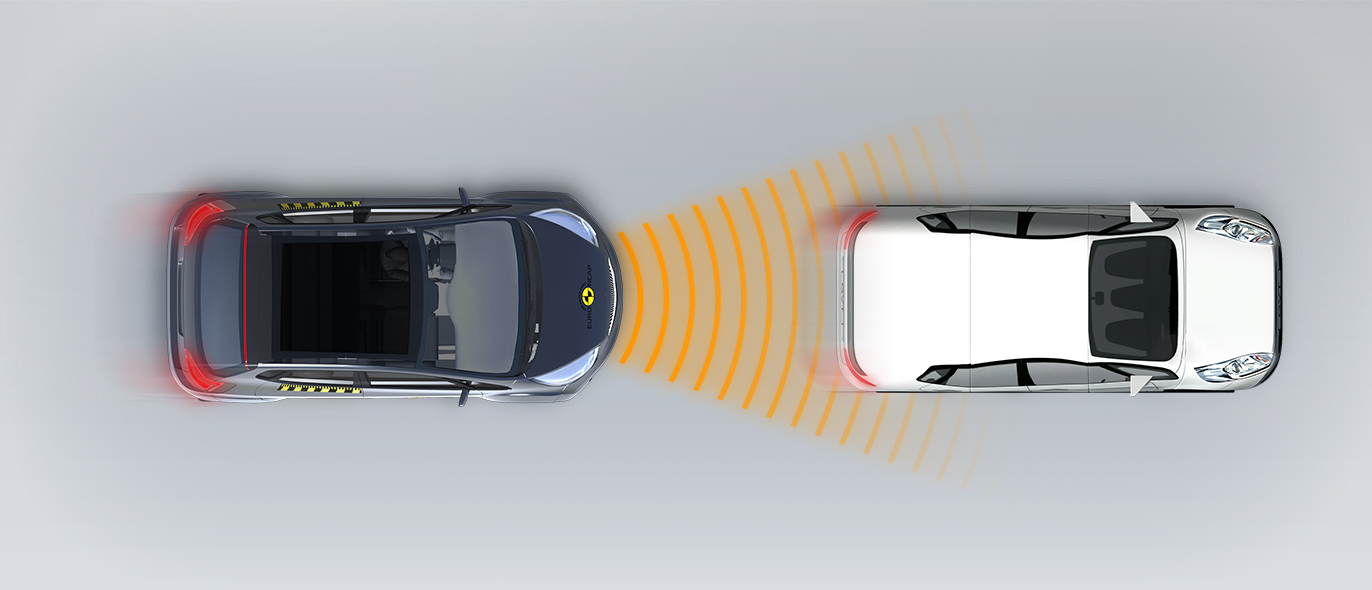
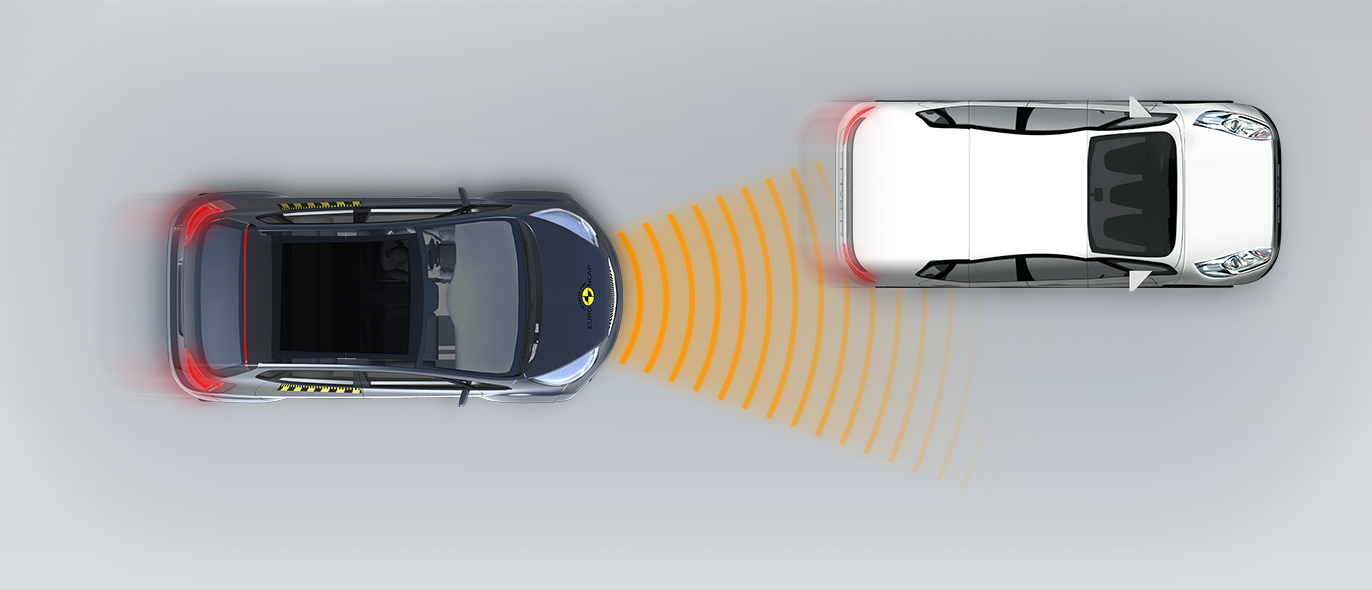





The passenger compartment of the BAYON remained stable in the frontal offset test. Dummy numbers showed good protection of the knees and femurs of both the driver and passenger. Hyundai showed that, on the passenger's side, a similar level of protection would be provided to occupants of different sizes and to those sitting in different positions. However, on the driver's side, structures in the dashboard were considered a risk to occupants' legs and a penalty was applied to the score. Protection of the driver’s chest was rated as marginal, based on dummy readings of chest compression. Analysis of the deceleration of the impact trolley during the test, and analysis of the deformable barrier after the test, revealed that the BAYON would be a benign impact partner in a frontal collision. In the full-width rigid barrier test, protection of the chest of the rear dummy was rated as weak, based on compression of the chest, but protection was otherwise good or adequate. In the side barrier test, protection of all critical body areas was good and the car scored maximum points in this part of the assessment. In the more severe side pole impact, protection of all critical body areas was good or adequate. The BAYON is not equipped with a counter-measure to mitigate occupant to occupant injuries in the event of a side impact. Mitigation of the extent to which a body would be thrown to the opposite side of a car in a lateral collision was rated as poor. Tests on the front seats and head restraints demonstrated good protection against whiplash injuries in the event of a rear-end collision. A geometric analysis of the rear seats also indicated good whiplash protection. The BAYON is equipped with an advanced eCall system which alerts the emergency services in the event of a crash, and with MCB, a system which applies the brakes after a collision to reduce the likelihood of secondary impacts.